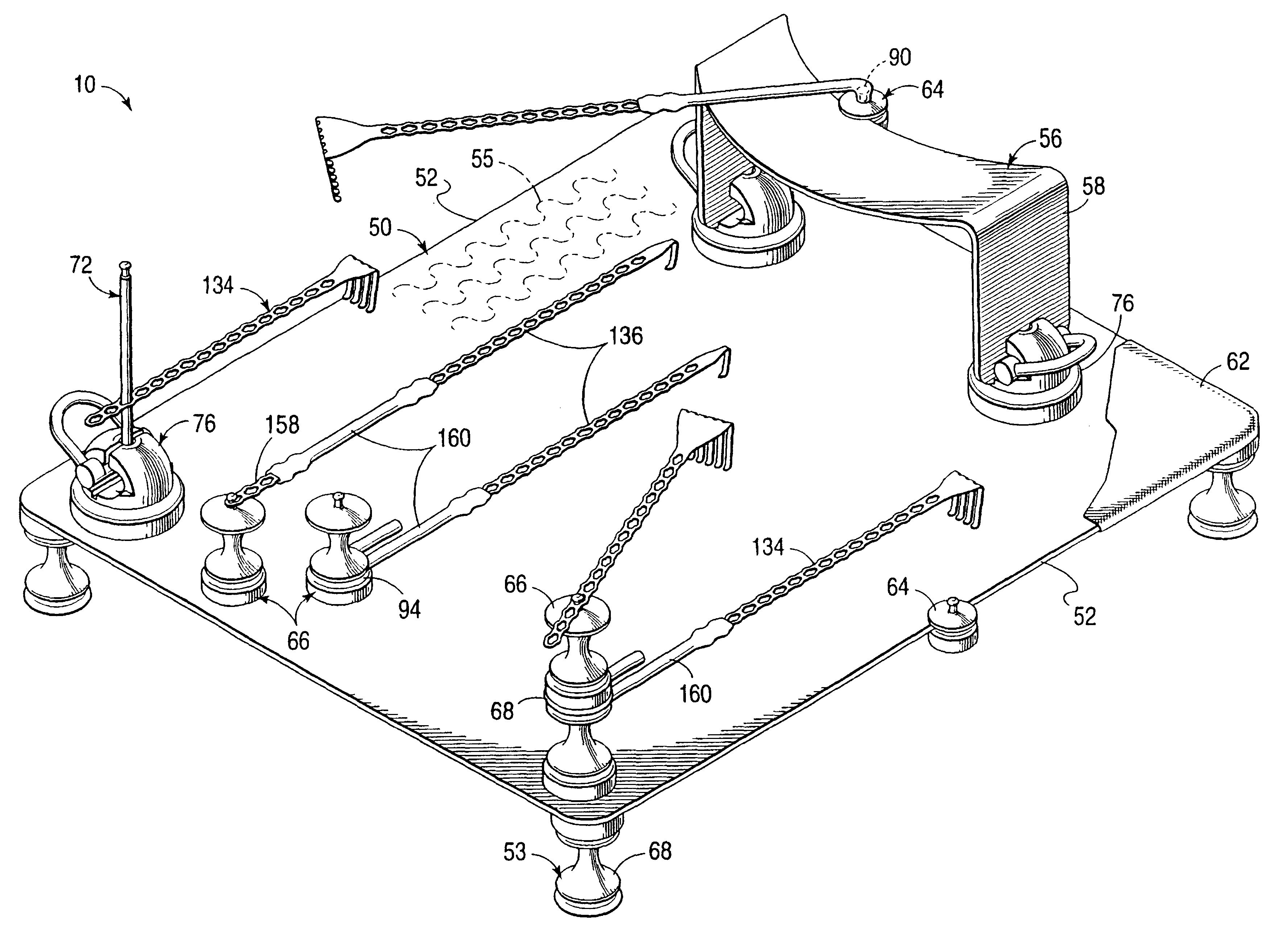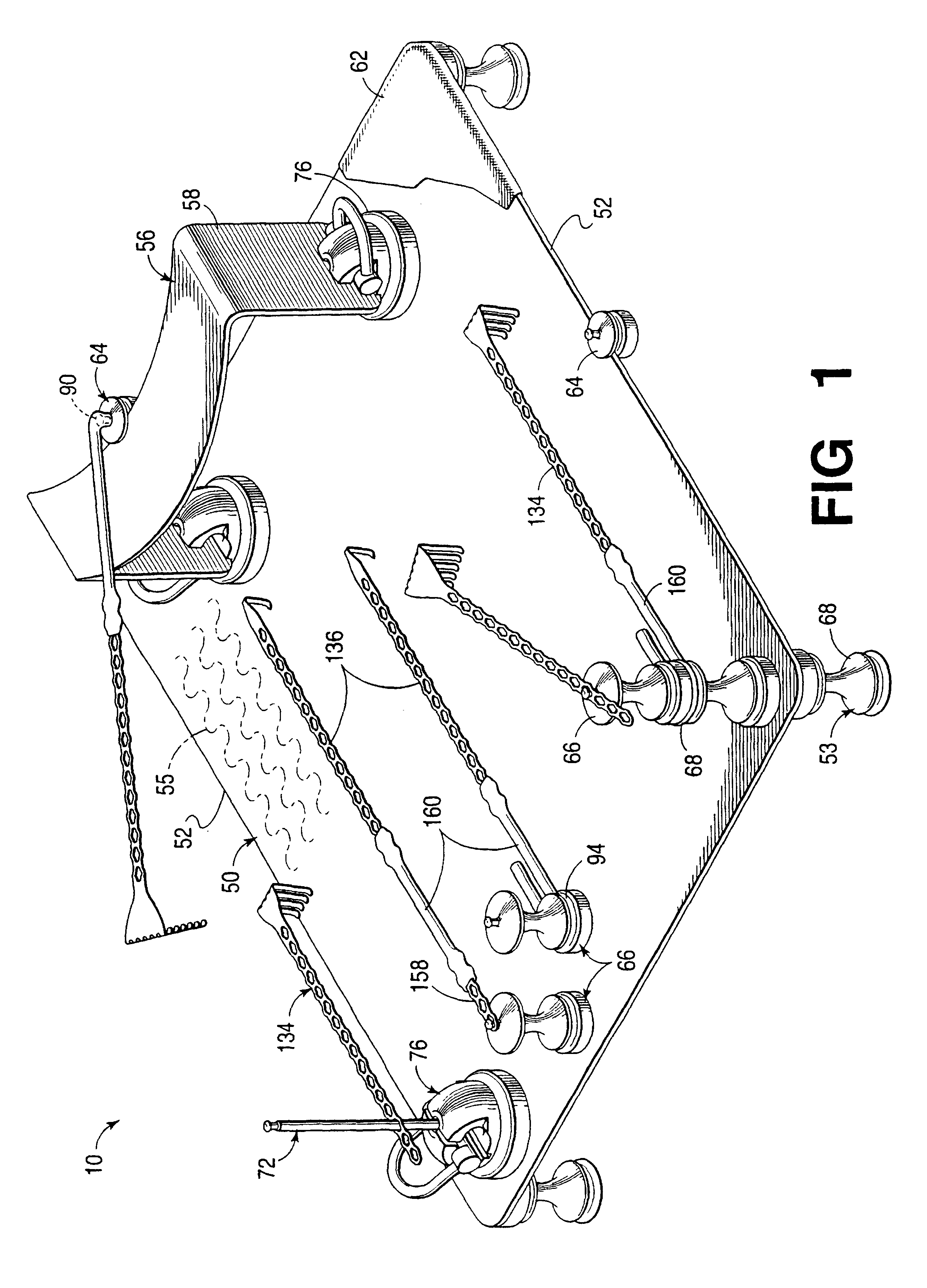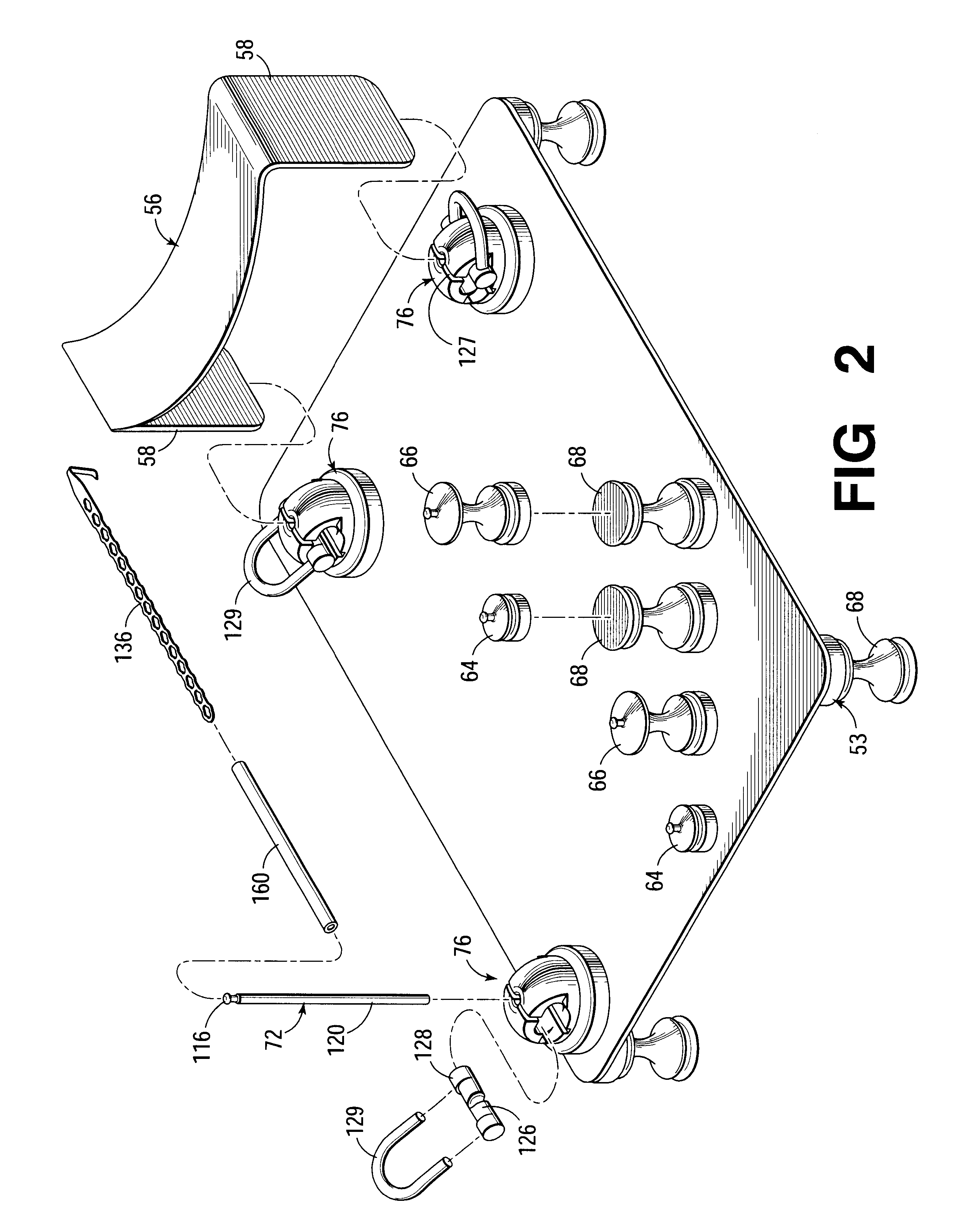Surgical fixation and retraction system
a surgical fixation and retraction technology, applied in the field of surgical fixation and retraction system, can solve the problems of restraining limbs and digits, difficult to add or change equipment in an operating room without compromising, and the change of the conventional surgical fixation and retraction device is slow,
- Summary
- Abstract
- Description
- Claims
- Application Information
AI Technical Summary
Problems solved by technology
Method used
Image
Examples
Embodiment Construction
Overview
This fixation and retraction system 10 may be utilized during a surgical procedure to stabilize, immobilize, or retract structures such as, but not limited to, flesh, bone, feet, legs, arms, hands, digits, surgical drapes, and other surgical equipment. The system 10 generally includes table components, fixation components, retraction components, and dynamic components. Various components are used for coupling a magnet to anatomical members or other surgical theater devices such as surgical drapes. FIG. 1 illustrates possible combinations of the components of the system to form a variety of magnetic and mechanical structures. FIG. 2 shows discreet components as an exploded perspective view. FIG. 3 shows various components of the system, as used during a surgical procedure of the hand. FIGS. 4-23 illustrate individual components of the system in more detail, while FIGS. 24-26 show additional combinations. FIGS. 27-30 show alternative embodiments of the system for use in securi...
PUM
 Login to View More
Login to View More Abstract
Description
Claims
Application Information
 Login to View More
Login to View More - R&D
- Intellectual Property
- Life Sciences
- Materials
- Tech Scout
- Unparalleled Data Quality
- Higher Quality Content
- 60% Fewer Hallucinations
Browse by: Latest US Patents, China's latest patents, Technical Efficacy Thesaurus, Application Domain, Technology Topic, Popular Technical Reports.
© 2025 PatSnap. All rights reserved.Legal|Privacy policy|Modern Slavery Act Transparency Statement|Sitemap|About US| Contact US: help@patsnap.com



